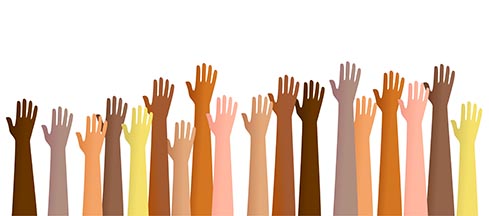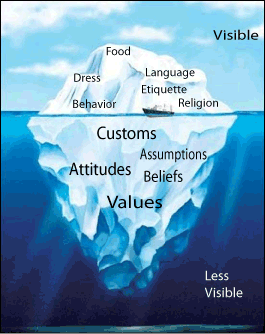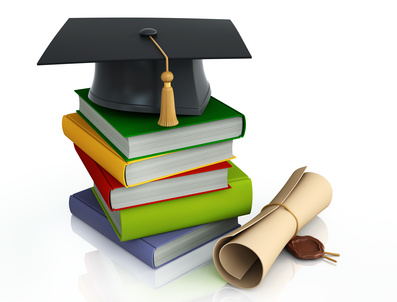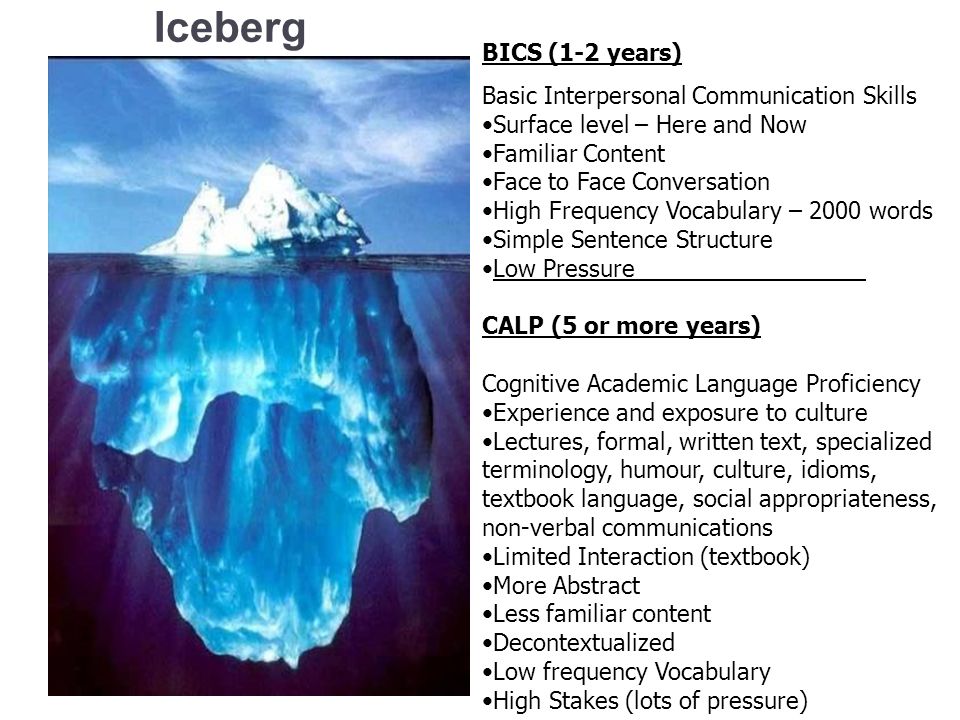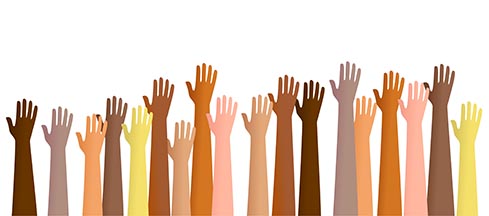
Culturally Responsive Teaching
Course objectives:
- Articulate the major aims of the multicultural education movement.
- Contextualize their present understanding of multicultural education by demonstrating awareness of historical events and persons that helped sensitize Americans to issues of cultural diversity and inequity in education.
- Identify the tensions between traditional and multiculturalists approaches to politics and education, and to personally reconcile them in a well-reasoned and defensible manner.
- Explain how culture impacts teaching and learning and suggest how increased sensitivity to multiple cultures in the classroom might impact their instruction.
- Assume instructional leadership for school-wide improvement in providing culturally responsive instruction.
- Develop a reflective stance toward their attitudes regarding all learners.
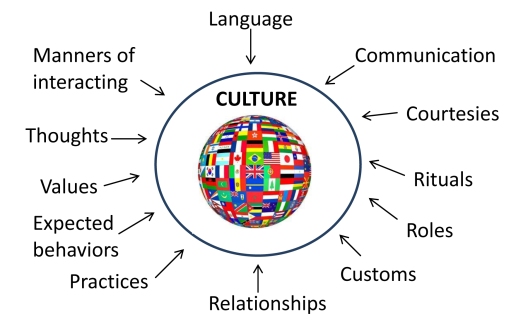
What is culture? This is the question that was posed to us at the beginning of this course. Throughout the course, I have learned about the different aspects that make up a person’s culture. As I grew to understand, culture is much more than just language and home country. It also includes race, religion, gender, socio-economic status, sexual orientation, education, social habits and customs, foods, music, arts, values, and more. It goes much deeper than I had ever imagined. A good analogy for culture is an iceberg. The parts of culture that we see are like the top of the iceberg that is above the water. All of the hidden aspects of culture are like the part of the iceberg that is under water. Throughout this course, I had the opportunity to learn more about many of the different aspects of culture, both seen and unseen.
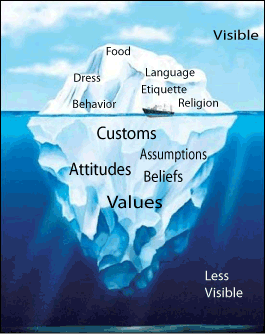
When incorporating different cultures and perspectives into the curriculum, it enhances students’ educations. Our lives have become much more global than they once were. If we only expose our students to the old, archaic curriculum of the past, we are missing out on a rich opportunity for our students to see beyond their own communities, state, or country. In addition to this, by teaching using multicultural curriculum, we are also helping all of our students to learn more about themselves and others. We are helping to validate the differences in cultures and to have our students see the value that they and others bring to our world. I have found this to be true within my own class groups this year. Our district recently adopted a new reading curriculum and I have noticed a few recent reactions from some of my students. The curriculum is definitely more multicultural. A few of the stories/readings have been about people of Mexican descent. Many of my students’ families are originally from Mexico. My students got very excited when we were reading these stories that portrayed foods, customs, etc. that they could relate to. Another recent story we read was an East Indian folktale. I had never heard this story before, but two of my Indian students recognized the story and felt empowered that no one else knew about the tale. I am very happy that our new curriculum takes this more multicultural approach to the teaching of reading. According to James Banks, “Transformative teaching and learning are characterized by a curriculum organized around powerful ideas, highly interactive teaching strategies, active student involvement, and activities that require students to participate in personal, social, and civic action to make their classrooms, schools, and communities more democratic and just” (Banks, 1996, p. 81). Our curriculum seems to be getting more multicultural, but still has a way to go to become more culturally inclusive.
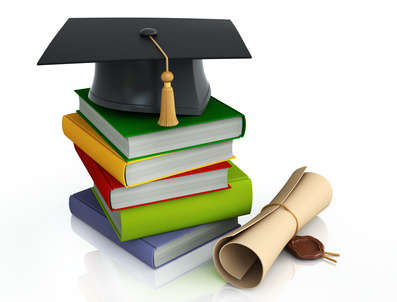
Mary McLeod Bethune felt that education was the path out of oppression. Bethune was a highly influential feminist, educator, and activist for social change and equality in America (Banks, 1996). It is important for both our male and female students to get a more balanced education about the history of our country and our world. We need to empower our girls with stories of strong women who have paved the way and who have come before them. We need to teach our boys that all humans are equal and worthy to play a role in our communities, cities, states, country, and the world. The story of Bethune was very inspirational and shows that each one of us is capable of great things, even when coming from humble beginnings. We need to share stories like the one about Bethune with our students to help them to have a more balanced understanding of history.
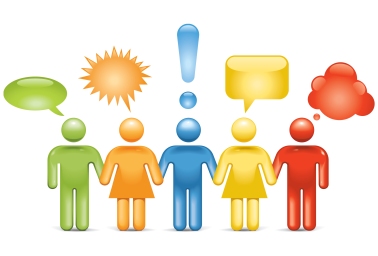
Culture plays an enormous role in how people communicate. Spoken language is just encoded culture and different cultures have languages, accents, and dialects that can confuse others who are not familiar with them. Communication goes well beyond just talk. Eye contact, physical movements, and voice inflections are all based on cultural norms. I found it interesting to think about how different cultures’ interactions oftentimes differ. For example, in some Black churches everyone talks or responds out loud. This is in direct contrast to the typical White church, where everyone is silent and listens to the priest or pastor speak. In the classroom we need to keep these cultural communication styles in mind as we relate to our students. In typical schools, the majority of time is spent with the teacher talking and the students listening (passive-receptive) and teachers tend to ask convergent questions. This however, is in opposition with how many students have been brought up in their home cultures. Some cultures tend to ask more divergent questions of their children and don’t follow turn-taking protocols. We need to be aware of these differences and adapt our teaching styles to fit the needs of all of our students. Group work tends to work well for some cultures, so a combination of group and individual work could be more effective.
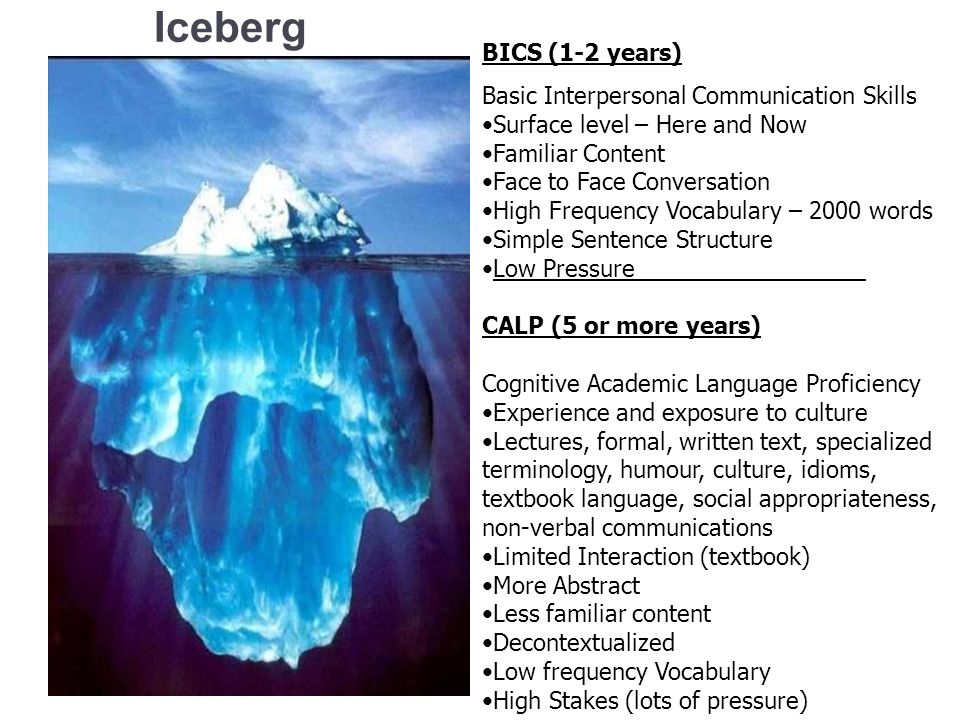
It was fascinating to learn about BICS and CALP. It tends to take ELL students 1-2 years to build their Basic Interpersonal Communication Skills (social communication). It tends to take students 5-7 years to build their Cognitive Academic Language Proficiency (language for academic learning). The tips for teaching ELL students were great to learn. Teaching vocabulary to ELL students is the single most important thing you can do for them to help them build their language skills. Other suggestions include…
-
- Summarize learning frequently
- Give students time to talk with a partner (student to student interactions)
- Use visuals like diagrams and pictures
- Hands-on learning
- Model the thinking process
- Check for understanding with frequent questions
- Keep explanations short
- Teach key vocabulary
- Scaffold the learning
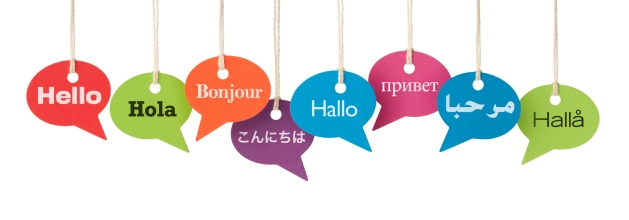
“Language plays an important part in the knowledge construction process in at least two major ways: (1) the language that individuals and groups are familiar with and use affects their perceptions of the world and of others (Whorf, 1959); and (2) the language individuals or groups choose to use or to not use sends powerful messages to others” (Newmeyer, 1986) (Banks, 1996, p. 298). Languages are disappearing from use every day. It is important for us to preserve and encourage the use of different cultures’ languages. There are many things that contribute to this loss of language, such as “genocide, social or economic or habitat destruction, displacement, demographic submersion, language suppression in forced assimilation or assimilatory education, electronic media bombardment” (Banks, 1996, p. 301). It is important for us to develop programs to help students preserve their languages and cultures. When students learn English, they don’t need to stop using their cultural language, they just need to add a new language to their repertoire. Bilingual education programs seem like a very effective way of helping students to learn a new language and continue to build on their home language skills as well. This also helps students to feel proud of their heritage and culture. The curriculum should also be culturally relevant (Banks, 1996, p. 315). Banks attributes the success of educational programs to local control, cultural compatibility, and an empowerment of teachers (1996, p. 316).
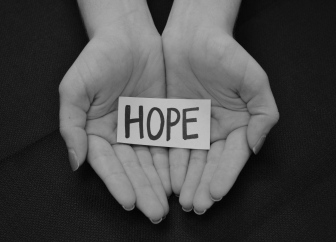
The article, Metaphors of Hope (Chenfield, 2004) was refreshing to read. Oftentimes we focus so much on what is wrong with the world and with education that we lose sight of all the amazing things going on in schools and classrooms. Most teachers got into the field of education to make a difference and change lives for the better. I know that is why I got into teaching. By looking at the successes and creative ideas of our colleagues, we can all learn some valuable lessons and strategies to help us with our own students. The more we work with others in the teaching profession, talk with them, observe them, and strategize with them, we will increase our bag of tricks, as well as our understanding of what works, and doesn’t work, in classroom situations.
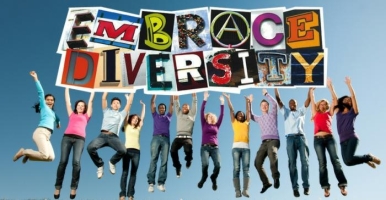
In the article, As Diversity Grows, So Must We (Howard, 2007) the author states that many schools are going through a rapid change of demographics and it can be challenging for staff, families, and students to adjust. He offers a five phase program to help schools to meet this challenge (Howard, 2007, p. 8). The phases include…
- Building trust
- Engaging personal culture
- Confronting issues of social dominance and social justice
- Transforming instructional practices
- Engaging the entire school community
When taking on this challenge, we need to remember that it isn’t easy and that it takes time to accomplish, but can yield great positive outcomes.
I have to admit that when I signed up for this class, I was excited to learn more about cultural awareness, but I really felt that what we would learn would be things that I already do as a teacher. I thought it would be an interesting, but not critical component of my Master’s program and my learning as an educator. Boy, was I wrong! I have learned so much throughout this class and my eyes have been opened to so many new ways of looking at things. My lens has been broadened and I have become more aware of what it takes to become culturally competent. It is a constant learning process that I have just begun. I will definitely carry this new learning over into any administrative position that I might obtain in the future. I will be more aware of looking for how culture affects students’ learning styles and how they approach and feel about education. I will continue to look carefully at our curriculum and supplement it as necessary with culturally responsive materials. I will continue to have high expectations for all of my students and respond to them in a caring and positive way. I will continue to be amazed at how many of my students can know and learn multiple languages. I will learn from my students and have them share information about their cultures and help them to feel that they are truly unique and valued individuals. I will work to communicate with families and help parents to feel welcomed and share with them the multitude of ways that they can become engaged in their child’s education.
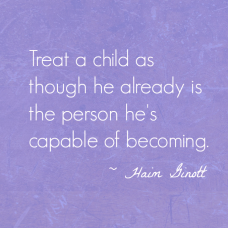
“I’ve come to the frightening conclusion that I am the decisive element in the classroom. It is my daily mood that makes the weather. As a teacher, I possess a tremendous power to make a child’s life miserable or joyous. I can be a tool of torture or an instrument of inspiration. I can humiliate or humor, hurt or heal. In all situations, it is my response that decides whether a crisis will be escalated or de-escalated and a child humanized or de-humanized.” Dr. Haim Ginott.
References
Banks, J. A. (Ed.). (1996). Multicultural education transformative knowledge & action historical and contemporary perspectives. New York, NY: Teachers College Press.
Howard, G. R. (2007). As diversity grows, so must we. Educational Leadership, 16-22.
Chenfield, M. B. (2004). Metaphors of hope. Phi Delta Kappan, 271-275.
Newmeyer, F. J. (1986). The politics of linguistics. Chicago: University of Chicago Press.
Whorf, B. L. (1959). Linguistics as an exact science. In L. F. Dean & K. G. Wilson (Eds.), Essays on language and usage. New York: Oxford University Press.
